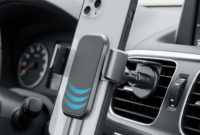Introduction to Home Surveillance Systems: Home Surveillance System With Mobile App For Sale
In today’s world, the importance of home surveillance systems cannot be overstated. With increasing concerns about safety and security, these systems have become essential for protecting homes and loved ones. They provide peace of mind by allowing homeowners to monitor their property in real-time, deterring potential intruders and ensuring a quick response to any security threat.
Home surveillance systems typically come equipped with features such as high-definition video recording, night vision, motion detection, and two-way audio communication. With the evolution of surveillance technology, these systems have advanced significantly, transitioning from traditional analog cameras to sophisticated digital solutions. This progression has greatly enhanced the effectiveness and accessibility of home security.
Features of Home Surveillance Systems with Mobile Apps
Mobile applications have revolutionized how homeowners interact with their surveillance systems. These apps provide a range of functionalities that enhance security management. Users can access live feeds, record footage, and adjust settings directly from their smartphones, making surveillance more convenient than ever.
Remote access capabilities are particularly noteworthy. For instance, a homeowner can check their property while on vacation or receive alerts when motion is detected. Real-time notifications via mobile devices ensure that users are always informed about activity around their home, allowing for swift action if necessary.
Types of Home Surveillance Systems Available for Sale
When considering a home surveillance system, it is crucial to understand the different types available. Below is a comparison of wired and wireless options, along with examples of popular brands and models currently on the market.
| Type | Advantages | Disadvantages | Popular Brands |
|---|---|---|---|
| Wired | Stable connection, high-quality video | Complex installation, less flexible | Hikvision, Lorex |
| Wireless | Easy installation, mobile access | Possible interference, battery management | Ring, Arlo |
Each type of system has its pros and cons that cater to different user needs. Evaluating these can help potential buyers make an informed decision.
Installation Process for Home Surveillance Systems
Installing a home surveillance system can be straightforward, especially with mobile app integration. The steps typically involve:
1. Planning camera placements for optimal coverage.
2. Gathering necessary tools such as a drill, screwdriver, and mounting brackets.
3. Following the manufacturer’s instructions for wiring or setting up the wireless system.
4. Configuring the mobile application to connect seamlessly with the surveillance system.
To optimize camera placement, consider factors like the layout of your property, potential blind spots, and positioning cameras at heights that minimize tampering.
Cost Analysis of Home Surveillance Systems
The cost of home surveillance systems can vary widely based on features and complexity. Pricing models usually include the initial purchase of equipment, installation costs, and possible subscription fees for cloud storage or advanced functionalities.
A breakdown of costs might reveal:
– Budget-friendly options: Basic models with essential features, typically ranging from $100 to $300.
– Mid-range systems: Offering enhanced features such as advanced motion detection and higher resolution, priced between $300 to $700.
– High-end systems: Comprehensive solutions with extensive monitoring capabilities, often costing $700 and above.
Comparison of these options helps homeowners understand which systems offer the best value for their needs.
Integration with Smart Home Devices
Home surveillance systems can significantly enhance security when integrated with other smart home technologies. Common devices that work well in an interconnected ecosystem include smart locks, smart lights, and alarm systems.
Integrating these technologies results in a more cohesive security setup. For example, when a camera detects motion, it can trigger smart lights to turn on, potentially scaring off intruders. This interconnectedness not only boosts security but also adds convenience for homeowners.
User Experience and Customer Reviews
User testimonials and reviews can provide valuable insights into the effectiveness of different home surveillance systems. Customers often share their experiences regarding installation ease, app functionality, and customer support quality.
Common issues reported by users include connectivity problems and resolution of false alerts. Brands that offer robust customer support typically see higher satisfaction ratings, highlighting the importance of service in the purchasing decision.
Best Practices for Using Home Surveillance Systems
To maximize the effectiveness of home surveillance systems, homeowners should follow certain best practices:
– Regularly update software to ensure the latest security features are in place.
– Schedule maintenance checks to ensure cameras are fully operational.
– Position cameras strategically to cover all entry points without creating blind spots.
A table of common mistakes to avoid includes:
| Mistake | Consequences |
|---|---|
| Ignoring firmware updates | Vulnerabilities to hacking |
| Poor camera positioning | Blind spots in coverage |
| Neglecting maintenance | System failures or malfunctions |
Awareness of these mistakes can help users enhance their surveillance effectiveness.
Legal Considerations and Privacy Issues, Home Surveillance System With Mobile App for Sale
When installing home surveillance systems, homeowners must consider relevant laws and regulations regarding privacy. Many jurisdictions have specific guidelines that dictate where cameras can be placed and what can be recorded.
Ethical considerations also play a role, particularly regarding surveillance in residential areas. To ensure compliance, homeowners should research local laws and potentially consult legal advice when necessary. Adhering to these guidelines not only protects privacy but also fosters trust within communities.


